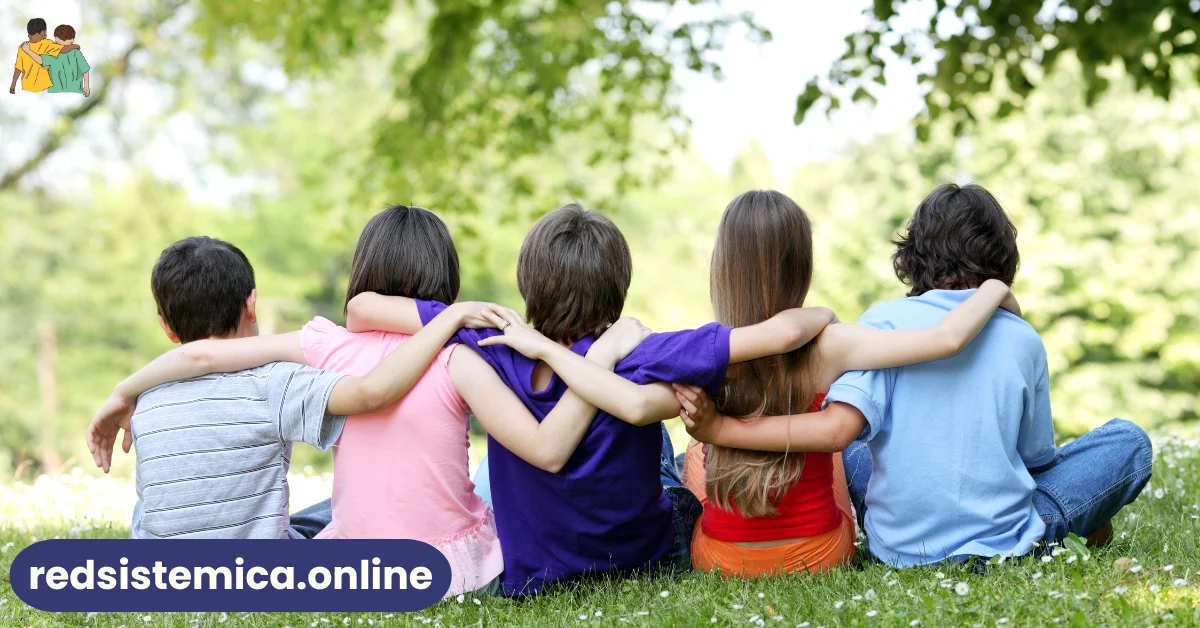1. Introduction to friendship
Friendship is one of the fundamental pillars in any person’s life. Beyond being a simple interpersonal relationship, friendship has the power to influence our emotional, physical, and mental well-being. In this article, we will explore in depth what friendship means, the different types of friendships that exist, and how these relationships impact our lives over time.

2. Types of friendship
2.1 Childhood friendship
Childhood friendship is the first form of social relationship that we experience outside the family circle. These friendships are usually based on proximity and shared activities, such as playing and learning together.
2.2 Friendship in adolescence
During adolescence, friendships take on a more central role in young people’s lives. They become a source of emotional support, and it is common for teenagers to form close-knit groups, where they share interests and secrets.
2.3 Friendship in adulthood
Friendships tend to be more selective in adulthood. Quality takes precedence over quantity, and these relationships are based on trust, loyalty, and mutual support. Maintaining strong friendships during this stage can be challenging due to responsibilities such as work and family.
2.4 Friendship in old age
Friendships in old age are essential to combat loneliness and maintain a sense of belonging. At this stage, friends are usually people who have shared many experiences throughout life.
3. Benefits of friendship
3.1 Emotional well-being
Having close friends provides great emotional well-being. Friends offer us a safe space to express ourselves, share our joys and sorrows, and get support in difficult times.
3.2 Support in difficult times
A strong friendship can be a lifesaver during personal crises. Friends give us advice, encourage us, and often help us see situations from a different perspective.
3.3 Improving mental health
Studies have shown that people with strong social networks are less likely to suffer from depression and anxiety. Social interaction is key to maintaining a healthy and balanced mind.
3.4 Impact on physical health
Friendship not only influences our mental health, but also our physical health. People with good friends tend to live longer, have fewer health problems and recover faster from illnesses.
4. Friendship in the digital age
4.1 Social networks and friendship
Social media has transformed the way we think about friendship. It is now possible to keep in touch with friends who are thousands of miles away, but this has also brought with it challenges in the way relationships are cultivated and maintained.
4.2 Virtual versus real friendships
While virtual friendships can be very meaningful, they don’t always replace the value of face-to-face interactions. It’s important to balance online connections with real-world relationships.
4.3 How to maintain long distance friendships
Maintaining a long-distance friendship requires effort and commitment. Communicating regularly, planning visits, and using technology to stay connected are some of the keys to keeping a relationship alive despite the distance.
5. How to build and maintain strong friendships
5.1 Effective communication
Open and honest communication is the foundation of any strong friendship. Learning to listen and express our needs and feelings clearly is essential to maintaining healthy relationships.
5.2 Trust and loyalty
Trust is the pillar on which lasting friendships are built. Loyalty, on the other hand, ensures that both friends are committed to the relationship for the long term.
5.3 Shared activities
Sharing activities is a great way to strengthen the bonds of friendship. From shared hobbies to collaborative projects, these experiences help build memories and deepen the connection between friends.
5.4 Conflict management
No friendship is perfect, and conflicts are inevitable. The important thing is to know how to handle them constructively, looking for solutions that strengthen the relationship rather than weaken it.
6. Challenges in friendships
6.1 Betrayal and disloyalty
Betrayal in friendship can be devastating, leaving deep scars. It is crucial to learn how to handle these moments, whether it is by repairing the relationship or making the decision to walk away.
6.2 Competition between friends
Competition can arise even in the closest of friendships. The important thing is to recognize and address it before it causes damage, making sure that both parties feel valued and respected.
6.3 Toxic friendships and how to recognize them
Not all friendships are healthy. Recognizing a toxic friendship involves identifying patterns of behavior that make us feel belittled or exploited. In these cases, it is vital to set boundaries or consider distancing ourselves.
6.4 Getting over a broken friendship
Getting over a friendship breakup can be just as painful as ending a romantic relationship. The healing process includes accepting the loss, reflecting on what you’ve learned, and eventually opening up to new friendships.
7. Famous friendships in history and culture
7.1 Literary friendships
Literature is full of examples of great friendships, from Don Quixote and Sancho Panza to Sherlock Holmes and Dr. Watson. These literary relationships have left an indelible mark on our culture.
7.2 Friendships in politics
Throughout history, some political friendships have changed the course of events. From the relationship between Franklin D. Roosevelt and Winston Churchill to the friendship between Mahatma Gandhi and Jawaharlal Nehru, these connections have shaped nations.

7.3 Friendships in art
In the art world, friendships have been sources of inspiration and collaboration. Vincent van Gogh and Paul Gauguin, for example, shared an intense, albeit brief, friendship that influenced their works.
7.4 Friendships in film and television
Friendships depicted in film and television often reflect our own experiences, from the inseparable pals of “Friends” to the complex relationships in “Breaking Bad.”
8. Conclusion
Friendship is an essential part of our lives, offering emotional support, mental well-being, and a sense of belonging. Throughout this article, we have explored the different aspects of friendship, from its benefits to the challenges it can present. Friendship not only enriches our lives, but it also helps us grow as individuals. Cultivating and maintaining strong relationships is an investment in our long-term happiness and well-being. We invite all readers to reflect on their own friendships and take steps to strengthen them. Whether through a call, a message, or meeting in person, every small gesture counts in keeping the flame of friendship alive.

